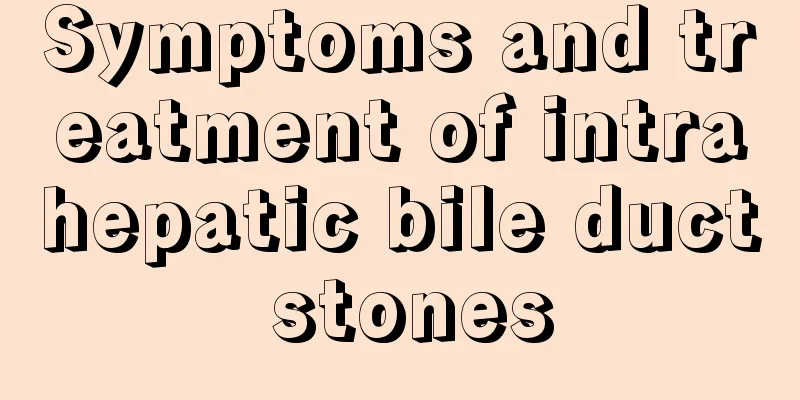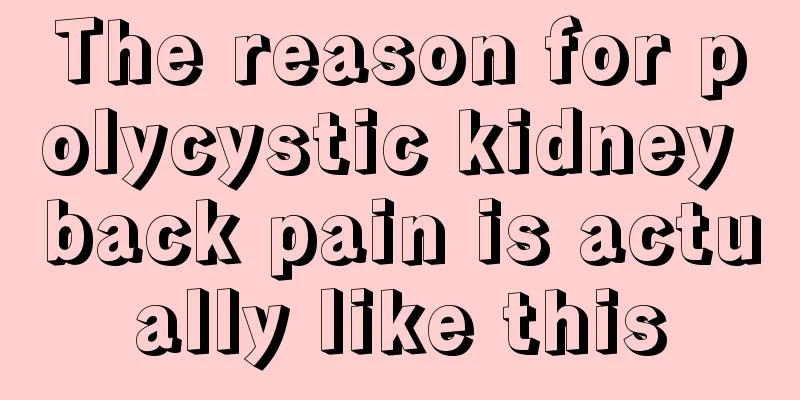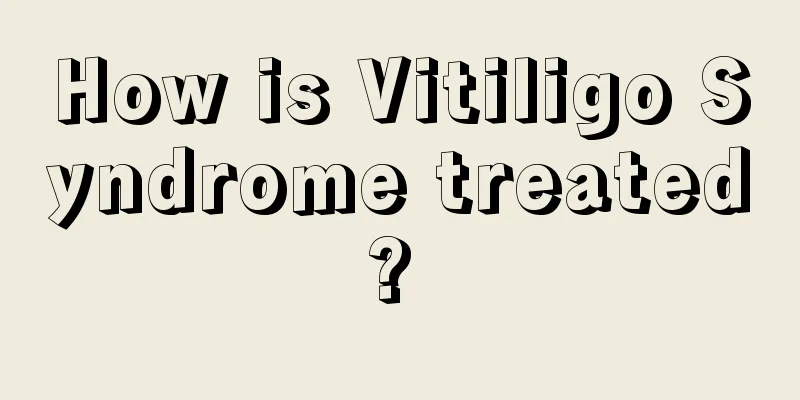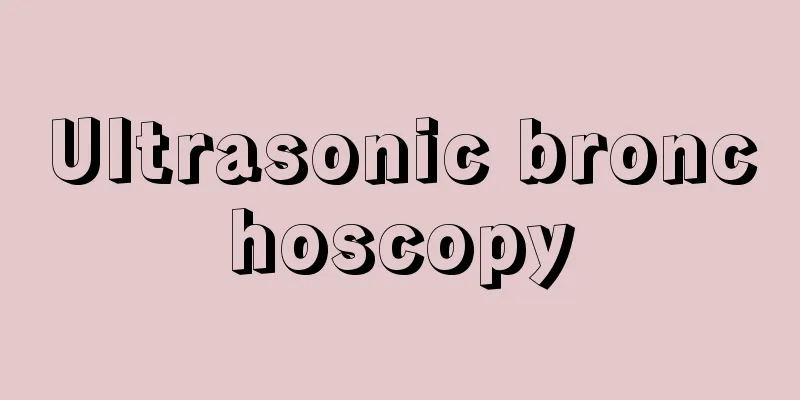Symptoms and treatment of intrahepatic bile duct stones

|
Many people do not understand what intrahepatic bile duct stones are. Simply put, intrahepatic bile duct stones are a type of stone inside the liver. In recent years, with the continuous development of medical technology, we have a better understanding of intrahepatic bile duct stones, and its symptoms have become more and more prominent. Everyone must understand the symptoms of intrahepatic bile duct stones, detect the disease early, and increase the probability of cure. 1. Symptoms of intrahepatic bile duct stones 1. Upper abdominal pain may be typical biliary colic or persistent bloating. Some patients do not experience obvious pain, but have very obvious chills and fever, which occur periodically. Upper abdominal pain, which may be typical biliary colic or persistent bloating 2. There may be a long history of biliary disease, or a history of acute cholangitis accompanied by chills, fever, and jaundice. 3. Patients with intrahepatic bile duct stones will often experience pain and discomfort in the liver area and lower chest, and the pain and discomfort will radiate to the back and shoulders. When one side of the hepatic duct is obstructed, there may be no jaundice or only mild jaundice. 4. In the acute phase, symptoms of acute suppurative cholangitis or varying degrees of Charcot's triad (pain, chills, fever, and jaundice) may appear, most of which may be caused by concurrent extrahepatic bile duct stones. 5. There is obvious tenderness and percussion pain in the liver area, and the liver is asymmetrically enlarged and tender. 2. Complications of intrahepatic bile duct stones 1. Acute complications It is mainly bile tract infection, including severe hepatocholangitis, biliary liver abscess and accompanying infectious complications. The causes of infection are related to obstruction by stones and inflammatory strictures of the bile duct. Acute complications not only have a high mortality rate, but also seriously affect the effectiveness of surgery. 2. Chronic complications General malnutrition, anemia, hypoproteinemia, chronic cholangitis and biliary liver abscess, multiple hepatobiliary strictures, fibrosis and atrophy of liver lobes, biliary cirrhosis, portal hypertension, liver decompensation, and delayed hepatobiliary carcinoma associated with long-term biliary infection and bile retention. Chronic complications of intrahepatic bile duct stones not only increase the difficulty of surgery, but also affect the surgical results. Treatment of intrahepatic bile duct stones 1. Minimally invasive hepatolithotomy Minimally invasive liver-preserving stone removal is based on ERCP endoscopy. It uses the duodenal major papilla balloon to dilate the bile duct outlet, and then sends the ERCP endoscope into the common bile duct, through the common bile duct directly to the intrahepatic bile duct. The intrahepatic bile duct is dilated by the intrahepatic bile duct balloon, the inner diameter of the intrahepatic bile duct is expanded, and the stone removal channel is unobstructed. It can completely remove intrahepatic bile duct stones in one go. The entire operation is performed endoscopically under video visualization. It is painless, non-traumatic, and bleeding-free. It can completely cure intrahepatic bile duct stones in one go and preserve normal liver tissue. 2. Surgery The purpose is to remove as many stones as possible, relieve bile duct obstruction and stenosis, and eliminate infectious lesions in the liver, thereby allowing bile to be discharged smoothly. The main surgical methods include high bile duct incision and stone removal; biliary enteric drainage; and elimination of intrahepatic infectious lesions. 3. Treatment of residual stones Once the patient is found to have residual bile duct stones through T-tube angiography after surgery, the T-tube can be removed after the sinus tract is formed, and a choledochoscope can be inserted through the sinus tract to remove the stones using lithotripsy, a basket, etc. under direct vision. If the stone is too large, laser lithotripsy, micro-explosion lithotripsy or other methods can be used to break the remaining stone into small pieces before removal. 4. Traditional Chinese Medicine Treatment In addition to surgery and other comprehensive treatments, patients can also take acupuncture and anti-inflammatory and choleretic Chinese medicine to control inflammation and promote the excretion of stones. |
<<: What are the 6 major symptoms of cerebrovascular disease
>>: What is the normal level of bilirubin?
Recommend
Share a trick before going to bed to completely get rid of red blood streaks
Red blood streaks are not a serious disease. They...
What to do if your legs are dry and itchy in winter
Although winter is cold, the climate is relativel...
Which vegetables and fruits are high in iron?
Iron supplementation is undoubtedly one of the im...
Common methods of TCM treatment of ovarian cancer
Ovarian cancer is a type of oncology. Since this ...
People who are competitive are prone to a disease
As the saying goes, people go to high places and ...
Survey found: my country has become the world's largest lung cancer country
According to survey results, the incidence of lun...
The 10 most damaging things to your spleen and stomach in summer
Traditional Chinese medicine believes that the sp...
What is the main cause of skin cancer?
Among the many types of cancer, skin cancer is a ...
What are the common symptoms of bladder cancer? Be careful if you drink too much water, or you may get bladder cancer
In recent years, the incidence of cancer has show...
What to do if uremia has high potassium?
If the potassium content in the body of a patient...
Cancer patients can't eat ribs? Doctors tell you: If you don't want your condition to get worse, it's better to eat less of these foods
Aunt Zhang, who is nearly 60 years old, has been ...
What should I do if I have a cold stomach and feel like vomiting?
Of course, you need to pay attention to condition...
The doctor teaches you how to deal with 6 kinds of dental diseases
1. Burns on the roof of the mouth For burns on th...
What are the common preventive measures for lung cancer? We need to do a good job in preventing lung cancer in four aspects
Experts say: Lung cancer is one of the cancers wi...
What should I do if my fingers itch and peel?
With the arrival of spring and summer, many peopl...









